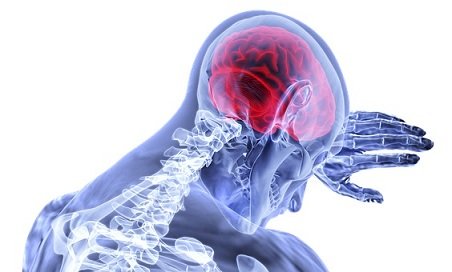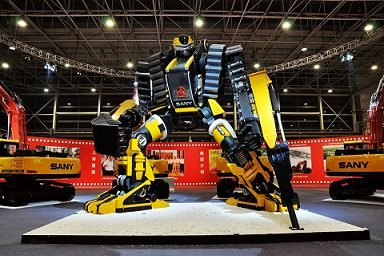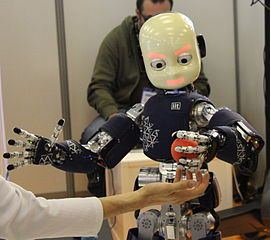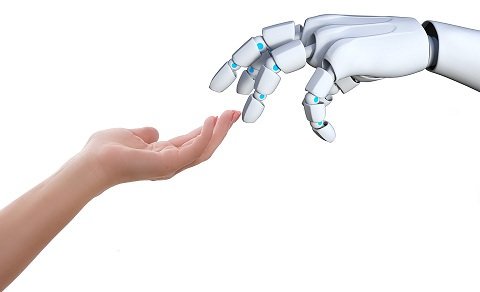Incorporating Pain Receptor In Robotics [Making Artificial Intelligence To Feel Pain]
Introduction
Pain reception is one of our most important makeups as humans, and has been instrumental to our survival and perception of potential threatening environment. Apart from some very rare cases of humans with Congenital Insensitivity to Pain (CIP), like; Zamora and Ashlyn Blocker; who were born without the ability to feel pain, “pain” has been exclusively preserved for humans (and animals) as a way of detecting the interactions with harmful environment that may pose threat to the body.
But what if Artificial Intelligence (AI) can also have the ability to detect pain? In this survey, we would consider the possibilities of incorporating pain receptor in robots. Remember this: One of the sole purposes of AI is to simulate the functions of the natural human brain in machines; and of course; “pain reception” is part of the functions of the human brain; so why can’t AI be made to simulate this?

[Image Source: Pixabay. CC0 Licensed]
To understand the concept of pain as it relates to robotics; let us first consider how it relates to humans. Then we can make extrapolations into the relationship with robots.
Concept of pain in humans
Before I proceed, let me give us this real life scenario: You come home late at night feeling very hungry, so you decide to warm some food in the pot. After you’ve set the pot on fire, your mind gets carried away for some time. When you later realized that you’ve been warming your food and it could get burnt, you rushed into the kitchen, and out of anxiety, you grab the hot pot with your bare hands. And in split-seconds, you fling the hot pot subconsciously.
Do you know what happened? When you grabbed the hot pot, the nerves were activated; thus sending signals in form of electrical impulses to your Central Nervous System (CNS). On reception of the signals by the CNS, a reflex was initiated that made you to fling the hot pot immediately to prevent you from getting some nasty burns.
But as it were, robots don’t have Central Nervous System but Neural Networks. So how would robots be made to simulate the effect of the natural pain in an unnatural way? Okay let’s look at the process of modeling pain in robots.
Pain-modeling in robots
We have seen amazing feats being achieved in the field of AI and robotics. For example, we have seen the advances by Project Alexandria, which hopes to incorporate common sense in AIs. Also, we have seen robotics with feelings, robotic citizens (Sophia; for example), and even robotic conception. Now we are looking at another milestone achievement that would usher us into the era of “Near-Human Machines”. In this concept of pain reception in robots, let us quickly look at the third law of robotics by Isaac Asimov to buttress some points:
“A robot must protect its own existence…” – Isaac Asimov. Source. [Paraphrased by me]
Now, for these robots to effectively do that, a form of pain receptive mechanism has to be put in place to help them detect potential threats. Let’s look at this example: In a steel industry, the robotic arms that are programmed with the function of handling and fitting heavy bolts could damage its arms if it mishandles any of the bolts. But if they can detect alterations in their immediate physical environment, they would know when they have gotten to their limits, and they would stop actions immediately.

[Image Source: Pixabay. CC0 Licensed]
A team of researchers from the University of Cambridge has come up with an idea of how to model pains in robotics. First of all, these robots would be incorporated with a biotech sensor (a sensor that models the pain receptor in the body of humans), which would be attached to various parts of the robots, particularly the parts that come directly in contact with a threatening situation; like the arms. These sensors would pick up and differentiate between diverse degrees of pressure and/or pain, and then relaying them to the central core of the neural network; thus initiating a reflex response (just like the human body would do when you mistakenly grab a hot pot; which would counter the action of the threat).
Note: Even in humans, the concept of pain is rather a complex one, which connects many parts of the Central Nervous System. Also, another fact is this; emotions can also be attached to pain in humans. But until now, the efferent domain (which includes emotions) has not been fully incorporated in AIs. And as you may know; “Pain” is at the apex of consciousness, but do we have conscious machines yet?
No doubt, advances have been made in that area. For example, in the medical robotics, the care-o-bot has arisen, which has successfully replicated some human-like emotional reactions to pains. Some other robots have been designed with facial expressions to show off pains (like smirking, grimacing, etc).

[Image of ICub Robot. Source: Wikimedia Commons. Author: Xavier Caré. CC BY-SA 3.0 Licensed]
Another question is this? If these robots are designed with pain receptors, would they also be equipped to counter the pain effectively; just like the human would drop a hot pot? Let’s look at what one of the researchers at Cambridge University; Professor Fumiya Lida had to say:
An organism (biological or artificial) has the right to freedom from pain. – Prof Fumiya. Culled from video source.
This has a partial fulfillment of the third law of robotics that I cited earlier. Now we’re getting closer to a point where almost every functionalities of the human body can be simulated in AIs. Of course, this is needed; because in the future; when we start to co-habit with these machines, it would be easier for them to relate with our emotions, feelings, and even actions (in that era, many of the organic humans may have also been turned cybernetic; and maybe, we would form bonds with machines).
The achievement of simulating pains in AI is; without contradiction; drawing us closer to the rise of superintelligent and conscious machines, and Artificial Intelligence could be overridden by Artificial Consciousness. This could be a partial fulfillment of the prediction made by the futurist and Google Chief Engineer; Ray Kurzweil:
In the future, AI would be able to manifest themselves at will in the physical world. – Ray Kurweil. Paraphrased from the source.

[Image Source: Pixabay. CC0 Licensed]
Conclusion
Like we have seen, pain is no longer exclusively preserved for humans (and animals), but can also be replicated in AIs. And the trail has already been blazed in the right direction. In my opinion, if these machines are made to have a feeling of what we feel, it would be easier to interact with them. But the question is this: can they bear the kind of pain we can; like emotional pain? Maybe the future will tell. Let’s just keep an open mind and watch what the future holds.
Thanks for reading
References for further reading
All images are CC licensed and are linked to their sources


gif by @foundation
I would say that simulating pain is probably not the same thing is feeling pain. But in both cases, this consists of an important warning (which is the scope), so... ;)
Yes you're right; warning of a potentially hazardous environment that may cause some nasty damages.
Thanks for dropping by sir
I meant that pain was actually nothing but a warning to our body that something is wrong somewhere. Sorry for not having been clearer ;)
Lol. Okay I now understand sir.
Damn. That means, soon robots will be more emotional than I am.
Lol yeah!. Maybe they'll teach you deeper emotions.
Thanks for coming around bro
Naaa. they will just mimic your emotion, not feel them ^^
Maybe I am too naive... maybe...
You are actually naive
You have technophobia
No I don't!v :p
That means artificial intelligence systems will cry soon
If anyone is feeling too specials remind the person that artificial intelligence systems are coming
Omg!! This really got me laughing so hard, lol
It's the truth man
Since this machines can be emotional why wait for a human to be too proud about making you feel better.... Because I now machines work better with instructions except for cases of failure
The future is certainly bright, since these robots can understand what one is going through, they will be great comforters and will sure help reduce depression rates.
Lol. Robot comforting humans.. Sounds like a cool idea though
I bet it does.
Wow! The possibilities with technology is just unending..This is another cool concept. But, really, do they need this? I believe their make up wouldn't allow much adverse conditions like high temperature to affect them
And then as you noted, would they react to the pain after feeling it
All in all, this is quite cool....Sammy robot
Yeah! The possibilities in technology are just limitless.
High temperature may not affect them, but wear, tear, physical damages can. So they need to protect their own existence. And this is one way of achieving this.
Thanks for the comment; human :)
You're just not serious 😂😂😂😂, Mr Robot.
Well, nice point you noted though.. I can't wait to see it integrated though.... Even though I haven't seen any physically before.
Since they are/would be designed, they should be designed to bear the pain. Won't it be funny to see a robot commit suicide... lol.
Lol. This is so funny.
I'm thinking; how would they commit suicide?
Since they trying to make them human... humans sometimes commit suicide due to the fact that they can't handle their emotional pain
No one likes to feel pain, of course it has its function which is to alert us that something is very wrong with our body, but no one likes to feel it, only masochists.
In the case of machines, I don't think they will like to feel it either, probably the best would be to figure out a way to inform the being that something is wrong, without having to suffer for it.
I agree with you. Infact, I don't really see it as needful. The feeling of pain though will protect them, might limit their actions and responses to situations.
As unwanted as pain is; it also help us to survive. Remember it's also a vital sign which alert us of threat.
If you read the story of Ashlyn Blocker that I mentioned earlier, you would understand the need for pains.
She doesn't feel pain, and because of this, she often mistakenly hurts herself so badly.
Thanks for coming around
its amezing and lessonable post...
Thanks
Such a nice one.
Thanks a lot
I'm intrigued by the possibilities that this can lead to, robots programmed to repeat tasks are getting too boring. Well done for the enlightenment.
Very many possibilities. Thanks for coming around